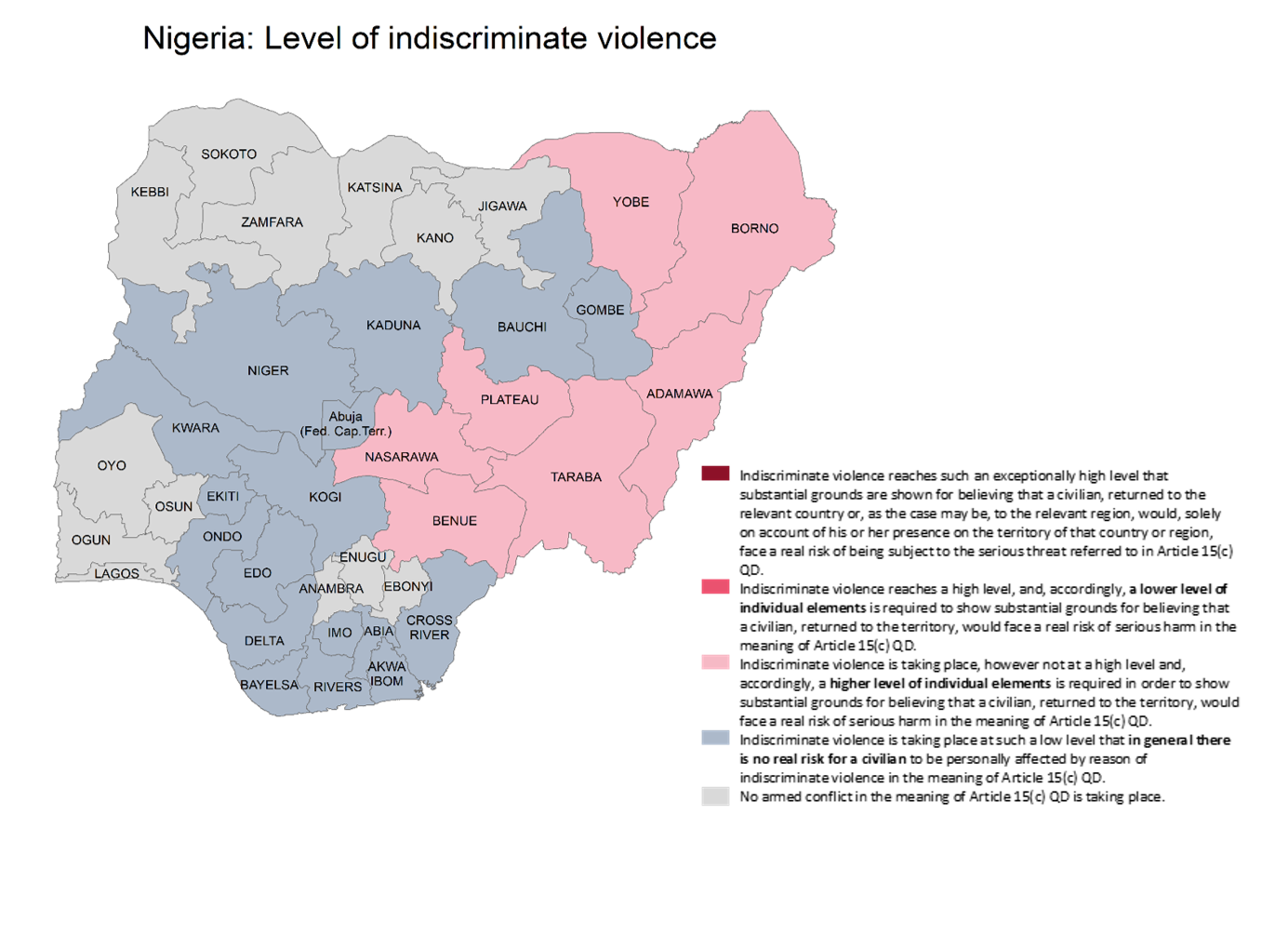In order to facilitate an understanding of the nature of the indiscriminate violence taking place in the different states of Nigeria, the analysis below is structured by zones. Depending on the availability and specificity of COI, parts of the analysis are provided at the state level, while others concern the states affected by the respective armed conflict in general. Where relevant, in the conclusions differentiation in the level of indiscriminate violence is made at the state level.
The map below summarises and illustrates the assessment of indiscriminate violence per state.

It should be noted that there are no states in Nigeria where the degree of indiscriminate violence reaches such a high level that substantial grounds are shown for believing that a civilian, returned to the relevant country or, as the case may be, to the relevant region, would, solely on account of his or her presence on the territory of that country or region, face a real risk of being subject to the serious threat referred to in Article 15(c) QD.

